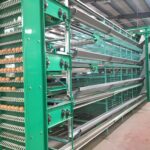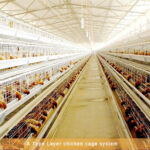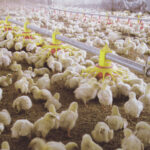Nutritional value of protein in broiler cages when raising chickens
When using chicken in a broiler rearing equipment, the protein used is one of the three basic nutrients of the body. It is composed of four basic chemical elements: carbon, hydrogen, oxygen and nitrogen. It is a complex organic compound composed of various amino acids, some proteins. It also contains chemical elements such as sulfur, iron, phosphorus and copper.
Protein is the only source of nitrogen in chickens, and the average nitrogen content is about 16%. Protein has many important functions in the body and has a very high nutritional value. Protein is one of the basic structural substances that make up chicken body tissues. All parts of the body contain proteins such as muscles, bones, nervous system, skin, feathers, internal organs, and blood. In all organs of chicken, except for water, protein is the highest content. For example, protein content in chicken feathers accounts for 80%, and 1/3 of dried chicken bones are protein. Different types of proteins determine the functional specificity of various tissues and organs. For example, the main component of the constituent tissues is globulin, and the main component constituting bones and feathers is hard protein. Protein is also one of the basic ingredients for tissue renewal in chickens. The total protein content in adult chickens remains essentially the same, but each tissue is undergoing protein decomposition and synthesis at any time.

Most of the decomposed proteins are used for re-synthesis, and some of them are excreted by metabolism. This part of the protein needs new protein to supplement. According to the experimental determination, the total amount of chicken protein is updated from 0.25% to 0.30% per day, and the body tissue protein can be renewed every 12-14 months. Protein is also an important functional substance of chicken body, and it is the main component of many kinds of substances with special biological functions.
Because protein is the only nitrogen source provider in chicken, it cannot be transformed and synthesized by other substances, and its function is not replaceable by any other substance. In the absence of protein supply, adult chickens will show digestive dysfunction, weight loss, reproductive dysfunction, weakened disease resistance, abnormal tissue and organ structure, reduced egg production or discontinued production, and growth of chickens will be severely blocked.
These are the symptoms and characteristics of protein deficiency that occur when using chicken in broiler battery cages. It is hoped that farmers can check the symptoms in time.










